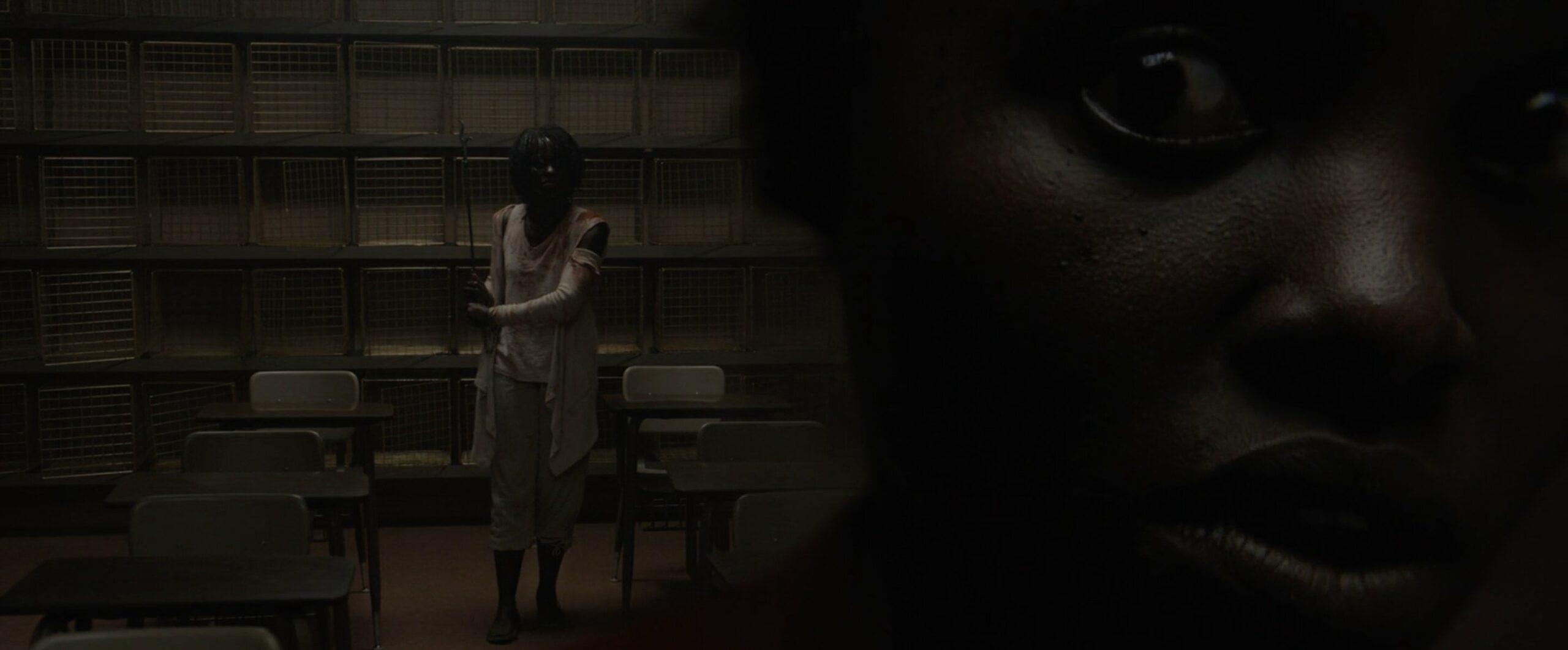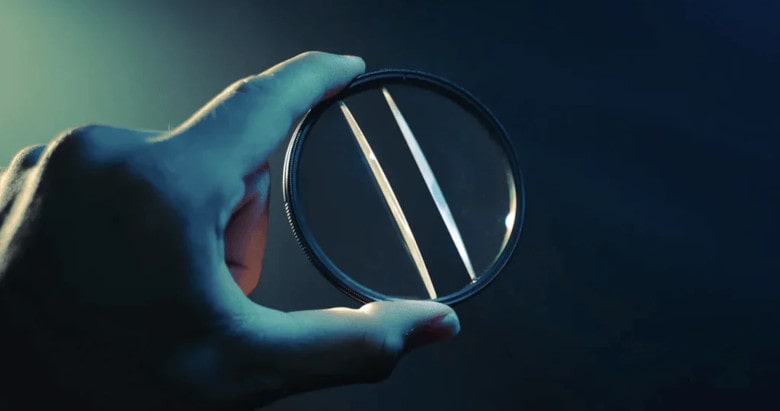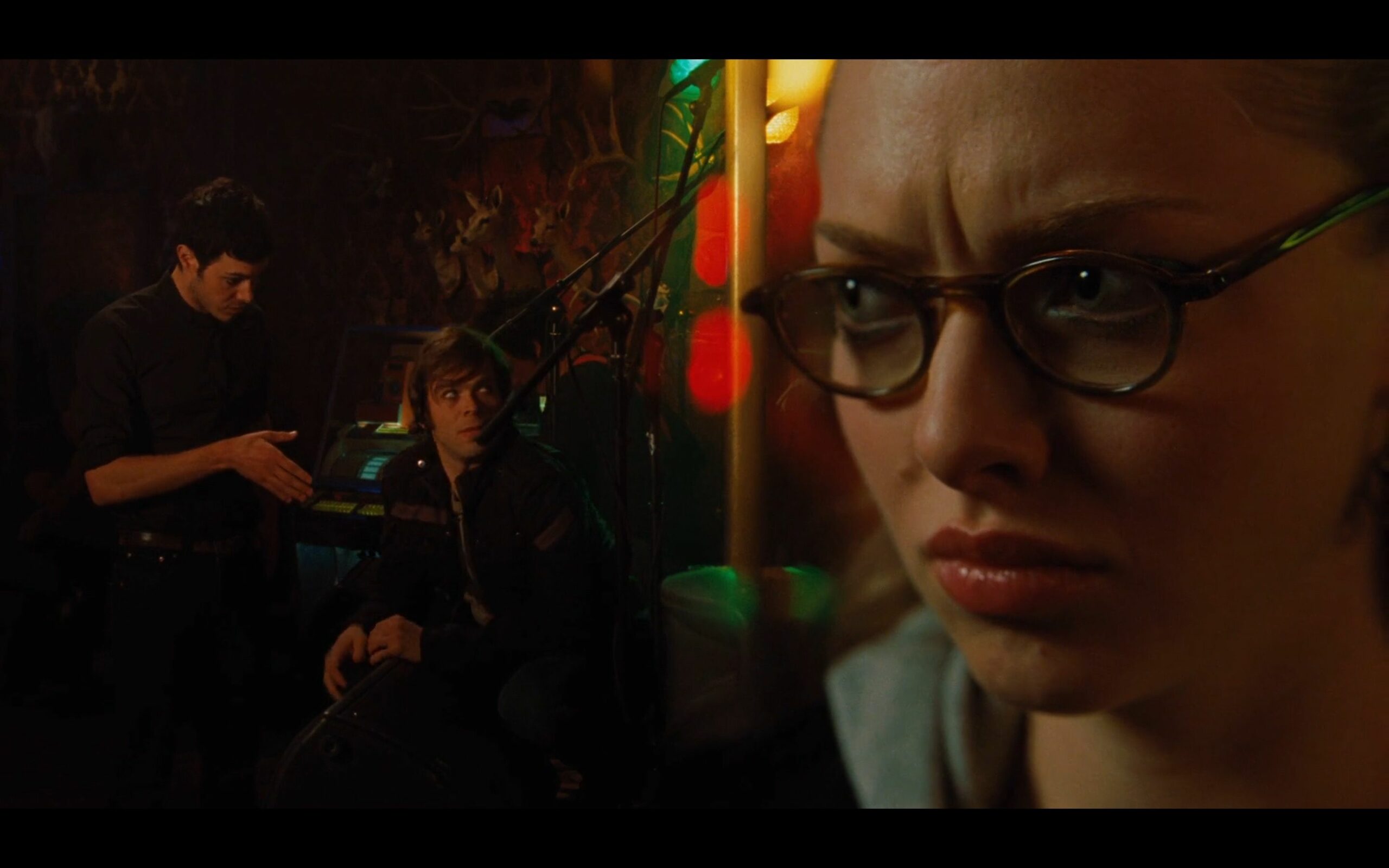The Split Diopter shot is a cinematographic technique that has been used by filmmakers for decades to create a unique visual effect that helps convey certain emotions or ideas. This shot is created using a special piece of equipment called a Split Diopter lens (find examples here), which is designed to split the focal plane of a camera lens in half.
The Split Diopter Shot is commonly used in suspense, thriller, and horror films to create tension and uncertainty by focusing on two subjects at different distances. This technique allows the filmmaker to draw the viewer’s attention to both the foreground and background of a shot, emphasizing their relationship or lack thereof.
The split diopter lens consists of two halves, each with a different level of magnification, and a movable divider that allows the two halves to be adjusted independently. When the lens is attached to the camera, the two halves of the lens split the image into two separate planes of focus. One half of the lens will focus on the foreground, while the other half focuses on the background, allowing both to be in sharp focus at the same time.
To create a Split Diopter Shot, the filmmaker must first decide on the subject or subjects that they want to emphasize. The shot typically involves a foreground subject, such as a person or object, and a background subject, such as a landscape or building. Once the subjects have been chosen, the filmmaker must determine the distance between them and select the appropriate diopter lens to achieve the desired level of magnification.
Next, the diopter lens must be attached to the camera, and the focus must be adjusted so that both subjects are in sharp focus. The filmmaker can then frame the shot, taking care to position the subjects in such a way that the relationship between them is clear.
One important consideration when creating a Split Diopter Shot is the lighting. The subjects must be lit in such a way that they are evenly illuminated, without any distracting shadows or glare. The lighting should also help to create the desired mood or atmosphere, whether it be suspenseful, eerie, or romantic.
Another important aspect of creating a Split Diopter Shot is the composition of the shot. The foreground and background subjects must be positioned in such a way that they complement each other, rather than compete for the viewer’s attention. The framing should be carefully considered, as the placement of the subjects within the frame can greatly affect the emotional impact of the shot.
How to Use a Split Diopter Lens
The Split Diopter lens works by dividing the lens into two sections: one for the foreground and one for the background. The lens is cut in half at an angle, and the two sections can be independently focused. This allows the filmmaker to adjust the focus of each section separately, which creates the illusion of deep focus and makes it possible to have two subjects in different planes of focus appear sharp and clear in the same shot.
To create a Split Diopter shot, the filmmaker must first determine the specific subjects they want to feature in the foreground and background. They then need to choose a Split Diopter lens that will allow them to focus on both subjects at the same time. Once the lens is attached to the camera, the filmmaker can adjust the focus of each section independently, ensuring that both subjects appear in sharp focus.
It’s worth noting that Split Diopter lenses can be challenging to use, as they require careful framing and composition to achieve the desired effect. The lens itself can also be quite bulky, which can make it difficult to move the camera quickly between shots. However, when used effectively, Split Diopter shots can be a powerful tool in a filmmaker’s arsenal, adding depth and complexity to the visual storytelling.
Split Diopter Shot Examples (Horror Edition)
The Split Diopter Shot has been used in various horror movies over the years to create tension, suspense, and a feeling of unease. Here are some examples of Split Diopter Shots used in horror films:
Us (2019): In the horror movie Us, directed by Jordan Peele, Split Diopter Shots are used to create a sense of duality and to emphasize the themes of doppelgängers and mirror images.
Jaws (1975): One of the most iconic Split Diopter Shots in horror movie history is the famous shot in Jaws where Chief Brody is on the beach, and the possible shark attack is happening in the water. The Split Diopter shot shows someone talking to him on the beach in the foreground, and the people in the water in the background, both in sharp focus. This shot is used to create tension and to show Brody’s attention being pulled in different directions… trying to carry on normal interactions and his attention constantly being pulled towards the water and the people in it.
Carrie (1976): In Carrie, Split Diopter shots are used to create a juxtaposition of different people. One notable example is the classroom scene where Carrie is sitting in the background and Tommy is in the foreground. Tommy is showing a different side of himself in his poetry, Carrie acknowledges it, but Tommy quickly responses with his anger and bullying nature. The two characters are two rows away from each other in the classroom, but this split diopter example puts the focus on them together.
Jennifer’s Body (2009): Multiple scenes in this movie are used similarly to other split diopter examples where a person’s face is in focus in the forefront while something they are concerned about or otherwise being juxtaposed with are in the background.
Last Updated on April 30, 2023.




1 Comment